


In addition to the ASIC chip mainly responsible for the hash rate calculation, the Antminer T17 hash board also includes temperature sensing chips, memory chips, PIC chips, voltage regulator chips, etc. The details of the T17 hash board chips are as follows:
ASIC chip: BM1397AG
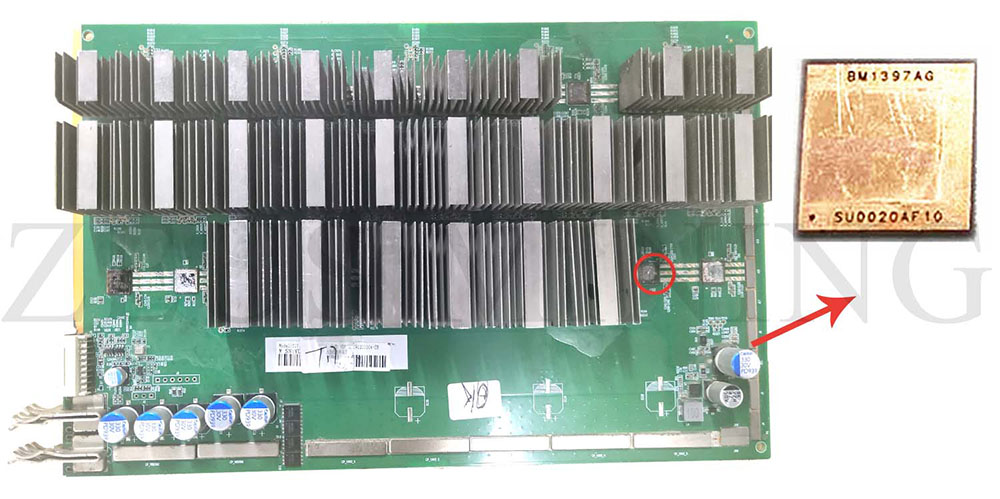
Antminer T17 hash board has built-in 30 BM1397AG chips, we can see the black glue under the heat sink, which is the thermosetting adhesive used to connect the hash board and heat sink, and the chip is just below the heat sink, mainly used for miner hash rate calculation.
U220: CT1F
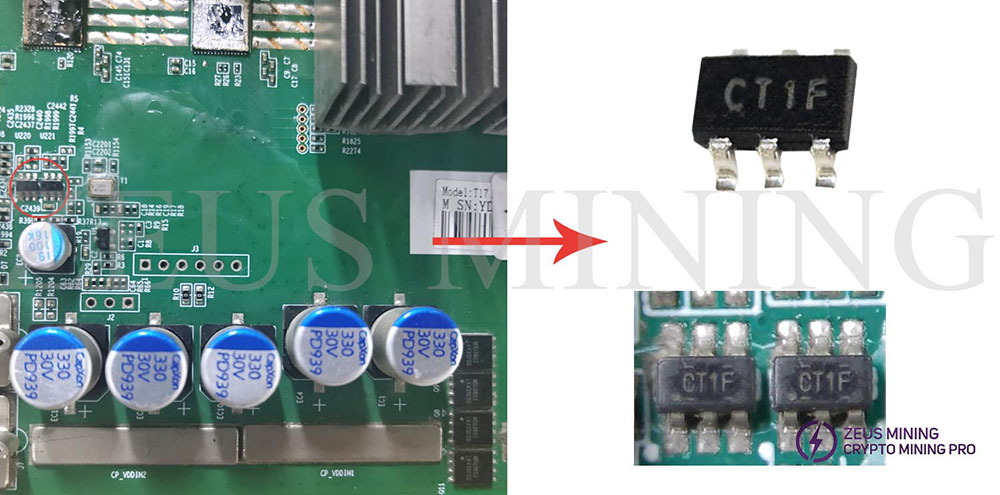
CT1F SN74LVC1T45DBVR adopts SOT-23-6 package technology; it is a 6-pin dual power bus transceiver chip IC, the working temperature is between -40℃~+80℃, and the working voltage is between 1.65V~5.5V.
U1: AP431SAN1TR-G1
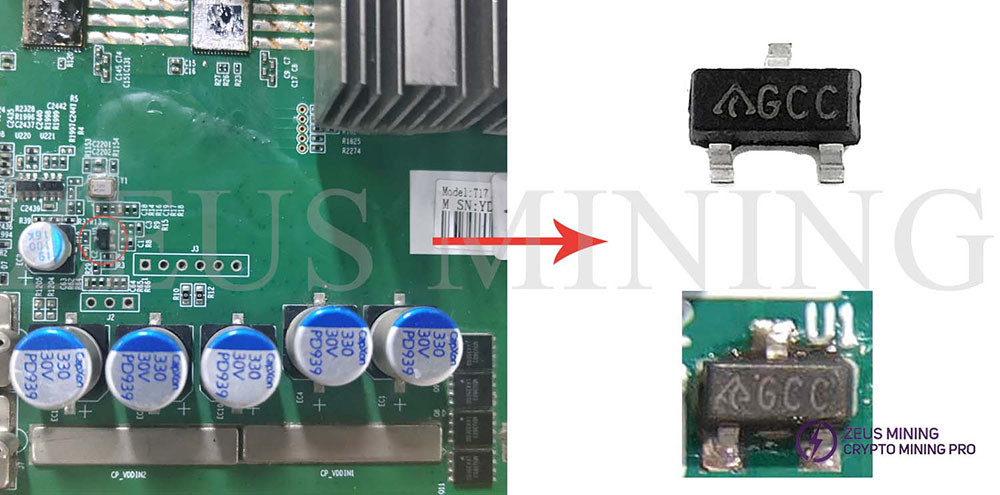
The AP431SAN1TR-G1 is a 3-terminal adjustable shunt regulator with guaranteed thermal stability over the entire operating range; in SOT23 package technology, its output voltage can be set to VREF (2.5V) and the corresponding maximum cathode voltage ( 36V) between.
Q8: MDU3603
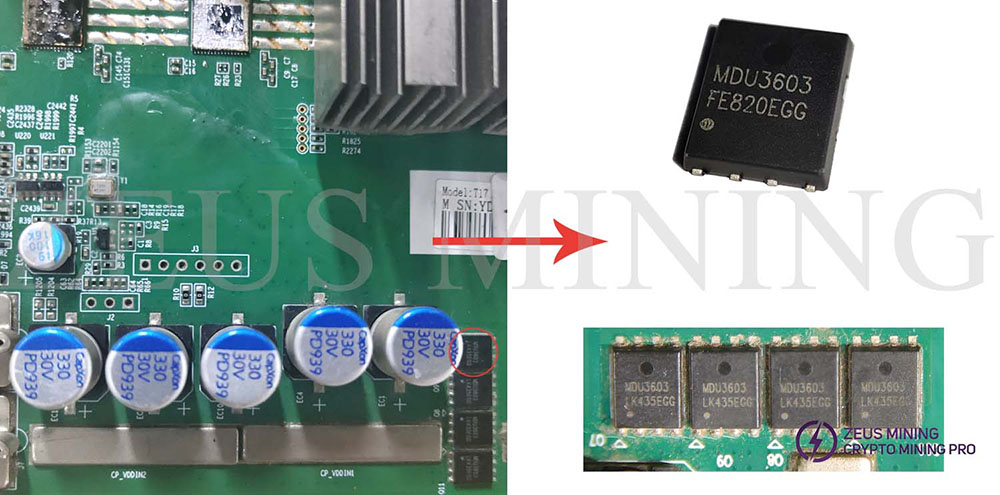
The MDU3603 uses advanced MOSFET technology to provide low on-resistance. They are mainly used in load switches and general applications.
U7: MP1517DR
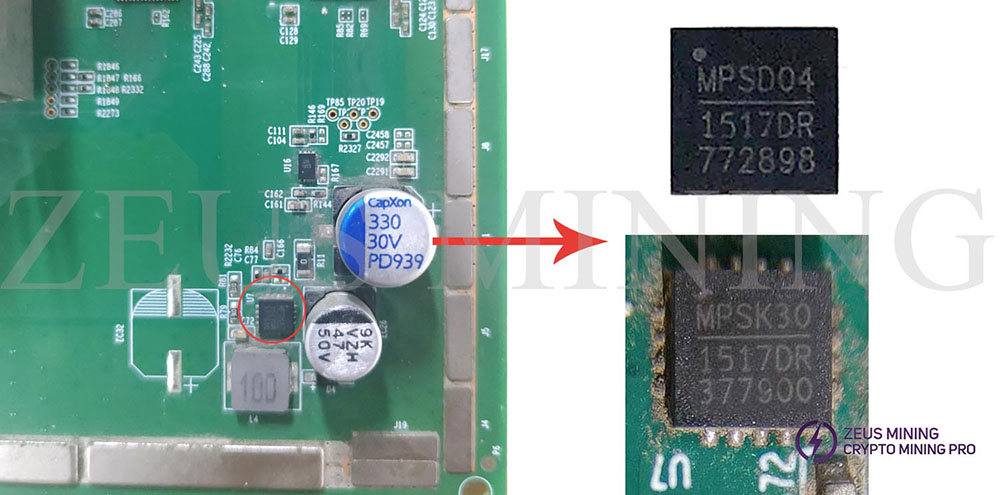
MP1517DR is a 3A, 25V, 1.1MHz boost converter; the function of this chip is to detect and control the output voltage of the hash board boost circuit and adjust it to the appropriate voltage in time. Packaged in a thermally enhanced QFN16 (4mm x 4mm) package, the MP1517DR regulates the output voltage to 25V with up to 95% efficiency. In addition, current mode regulation and external compensation components allow the MP1517DR control loop to be optimized over a wide range of input, output, and load current conditions.
U16: SXE1933
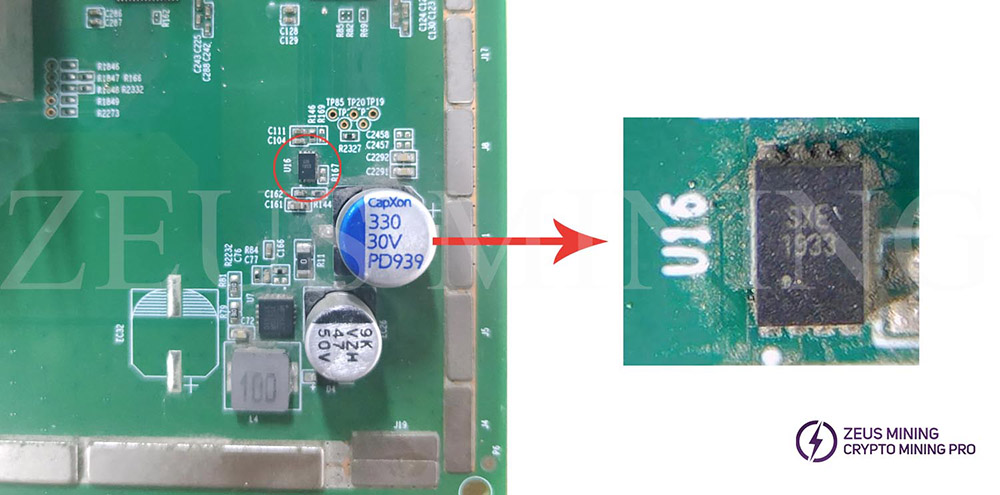
The SXE1923 voltage monitoring chip is mainly used to monitor the real-time voltage of the hash board voltage domain. If the chip is damaged, the pre-boost chip will not be able to receive the returned data and stop working, causing the hash board to fail to start. In addition, the hash board is also susceptible to electromagnetic interference from the adjacent starfish board, resulting in inaccurate temperature monitoring, repeated startup, and other failures.
U6: ATH91702DMCN
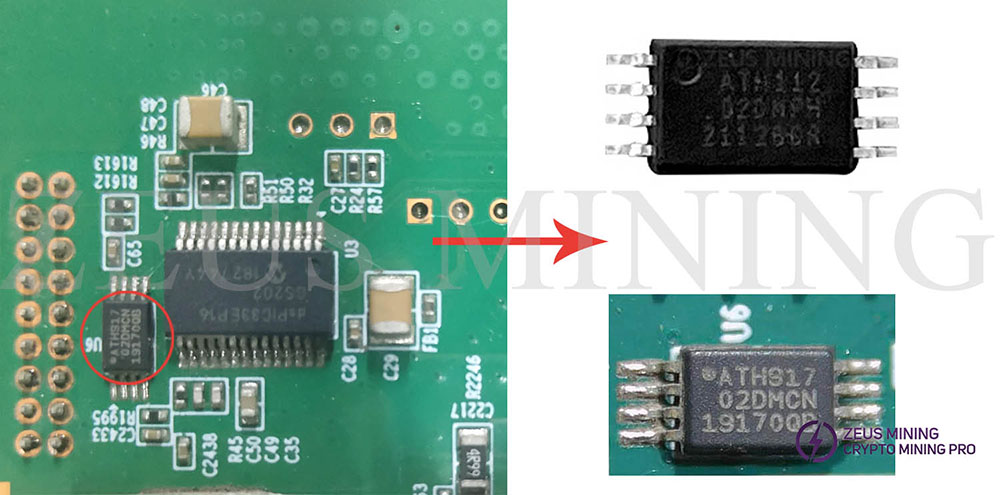
The ATH91502DMCN is an 8-pin TSSOP chip that provides 2,048-bit electrically erasable and programmable read-only memory, primarily storing EEPROM data. The chip has a built-in bidirectional data transmission protocol, compatible with 400kHz (1.7V) and 1MHz (2.5V) simultaneously. However, its operating voltage is between 1.7V and 3.6V, and the data storage time is long.
U3: dsPIC33EP16
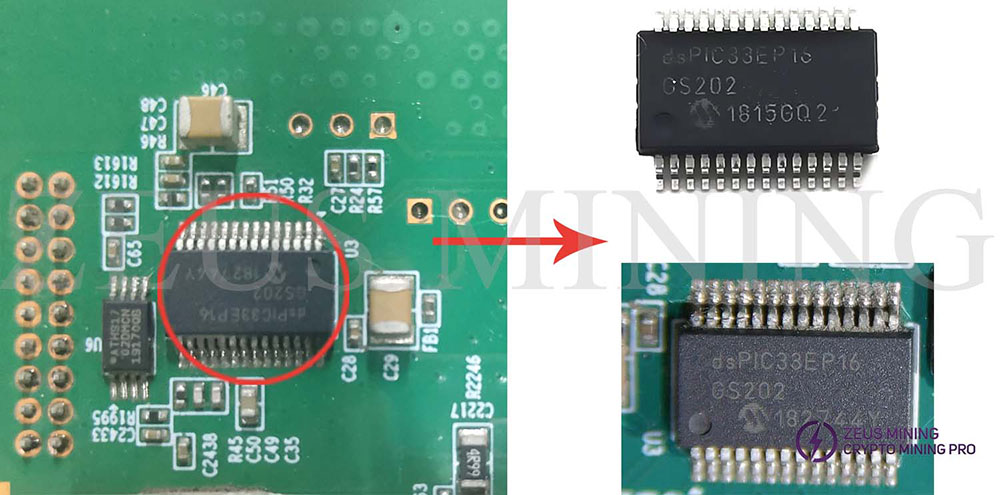
The dsPIC33EP16 GS202 is a 16-bit processor and microcontroller chip using SOIC-28 package technology. This chip stores the configuration data of the hash board (i.e., the PIC file). After the chip is damaged, the hash board will not work properly.
U17: MP2019
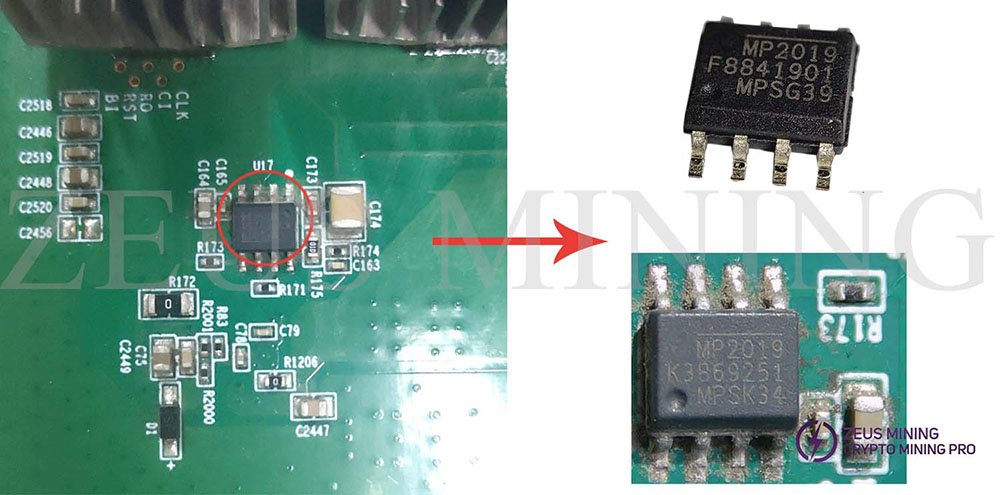
MP2019 is a 40V 300mA, low quiescent current adjustable output linear regulator in SOP8 package technology; it is mainly used for Hash board maintenance. It has an input voltage between 3V and 12V, a junction temperature range of -40°C to +125°C, and output accuracy of ±2% over temperature.
U225: LN1134A182MR-G 4VK4
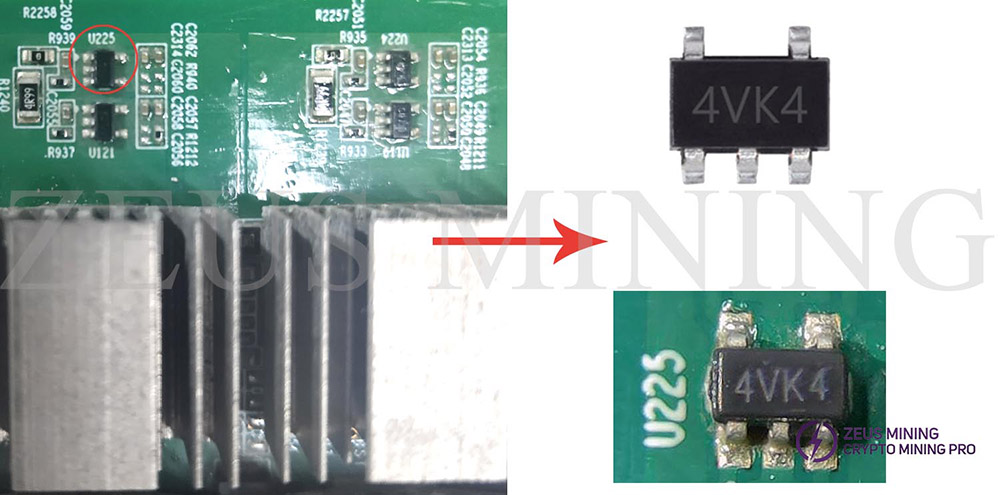
LN1134A182MR-G 4VK4 is a high speed, low dropout, high precision output voltage, low current consumption positive voltage regulator chip. Using the SOT-23-5, SOT-353 chip package, the output voltage is between 1.0V~5.0V, and the maximum output current is 300mA.
U119: SGM2036-ADJ
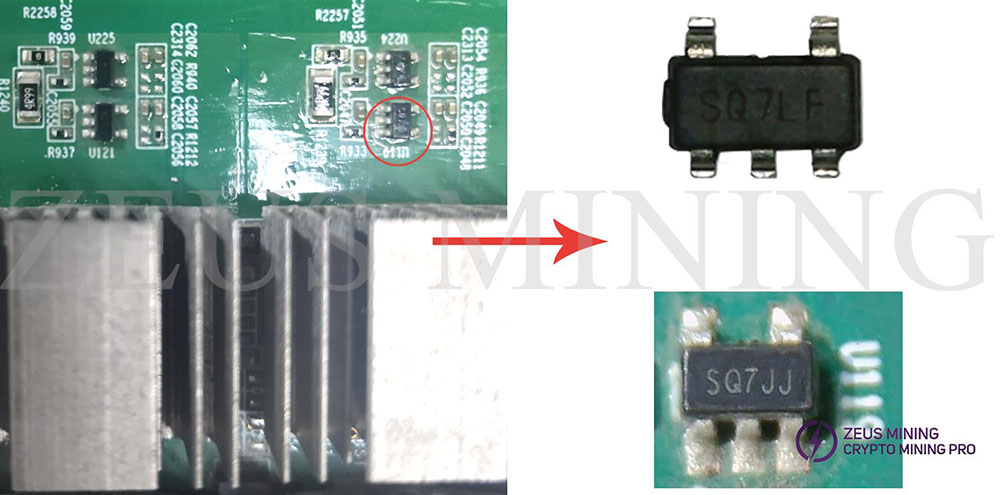
The SGM2036-ADJ is a 300mA, low power, low dropout, RF linear regulator chip in an OT-23-5 package. It is the perfect choice for low voltage, low power applications. It can effectively extend battery life. Its input voltage is between 1.6V and 5.5V.
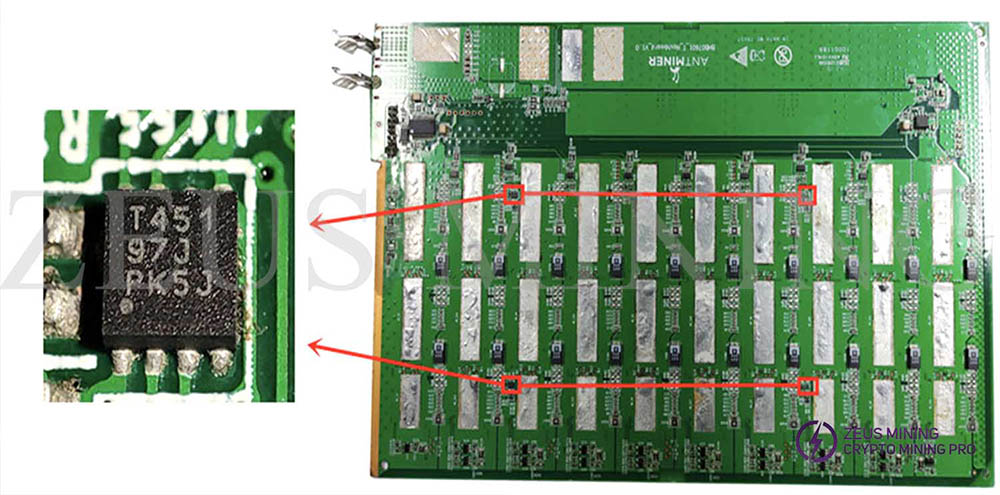
A single T17 hash board has 4 T451 temperature sensor chips, which are located on the back of the hash board, and you need to disassemble the heat sink to see it. Damage to the temperature sensor chip will cause abnormal temperature readings, the hash board will not start if the temperature is too low, or the hash board will stop running if the temperature is too high.
Antminer T17 hash board chip summary:
